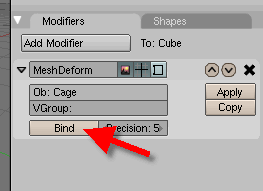
Dragonbones mesh deform upgrade#
It was announced sometime back in 2015 that the deforming features won't be officially supported until Spriter 2 is released, which will be a free upgrade for all Spriter Pro owners. Pusher, does parenting give the option to automatically create named vertex groups? Iirc, saving all that typing was one of the benefits.Sorry for the huge delay.
Dragonbones mesh deform windows#
If you turn it on, moving the bone in pose mode will move the appropriately named vertex group.īlender 2.45, Windows XP. In order for the bone to deform the geometry (dev speak for move the mesh) that deform button must be selected for the bone. There are six vertex groups: Forward Frame is not one of them. There are seven bones, with the following options (Editing Buttons window, Armature Bones panel)

I seleted the armature object and went into edit mode. I pressed the Make Real button and this became an Armature modifier with Ob: Armature and Vert Groups button pressed. The Add Modifier To: Comet panel says “Armature Parent Deform ” Ok, got the file (4Share doesn’t like my Firefox addons.).

Just using the mesh deform modifier was never the “new” or "current " method … You don’t have to parent with the mesh modifier stack, but you do not get some options not available simply from adding the modifier into the stack (which BTW with someone new will not know to place it towards the top - if not the top - of the stack, which as you know is where the “virtual” armature modifier gets placed when you do parent ). The only time you should turn that off is for control/target bones for which with some types of parenting sequences is not a good idea (for envelope mode and the new SVN “bone heat” methods of parenting) Orinoco and Mike_S : the parenting method for a number of reasons is still very useful for a number of reasons … well 1) the developers still use it to give us the rigger shortcuts as to what type of bone/weighting system you might want with the mesh and armature with hot keys, 2) establishing an object hierarchy between the mesh and armature from various (data) point of view is a good thing actually, and 3) “Pose space is a subset of Object space” … (I think I got that right) … though until about six months ago armature/pose space used quats but the mesh used Euler angles to calculate its deformation … … Just turn on the the “Deform” option (which is the default BTW) in the Armature Bones panel with the bone/armature selected …

Well Morris, usually mysteries like yours are so easily solved with the posting of the blend file … I wish more people would just post their questions with the blend file attached to their post … blend file on or some other site, we can take a look at see if there’s something obvious. Especially since there is little ? reason to ever want to key the Armature in Object mode. With CTR-P, you get object parenting, which may or may not be necessary / useful / harmful ? … useful in that you can move the armature in object mode and the mesh will follow along, though it might be argued that you should just use Pose mode whenever you want to position the rig. by either using CTR-P and the resulting dialog box or just adding an Armature “manually” … and which method is “better”.

I’m not sure if it’s in the “Intro to Char Animation” tutorial or the BSOD “Rigging …” tutorial or both, but there have been numerous citations of the “old way” and the “new way” of rigging / (adding an armature), i.e. Well this a part of blender that really needs to be documented clearly once and for all.


 0 kommentar(er)
0 kommentar(er)
